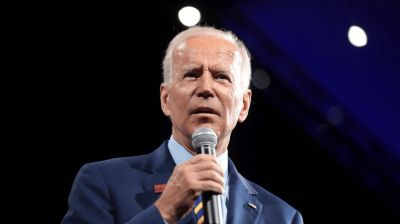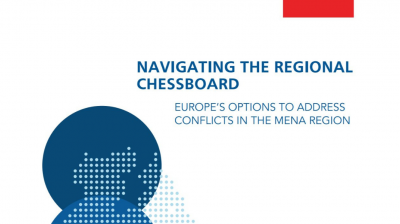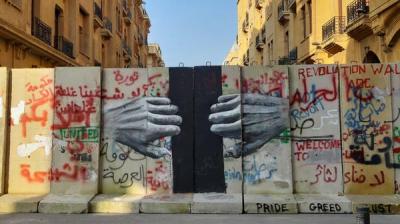The sticky webs of conflict & political order in the Middle East
This article was originally published in The Defense Horizon Journal (special edition of May 2021) and is reproduced with permission.
Abstract
This article argues that the dominance of geopolitical analysis of conflict in the Middle East must be complemented by more profound examination of the nature of its political orders and deeper socio-economic trends. It undertakes an initial exploration of these three dimensions of conflict and starts connecting resulting insights. A key observation is that authoritarian varieties of “limited access orders” continue to characterize the Middle East. Such orders tend to generate privileged governance and limit human development possibilities. They have recently come under growing budgetary strain due to falling oil prices, sanctions and tanking economies, including COVID-19 effects. Especially the region’s weaker states – Egypt, Iraq, Jordan, Lebanon, Syria and Yemen - have become financially dependent on stronger ones and/or sites of violent contestation between them. Europe and the US can reduce conflict incidence in the Middle East by shifting the dependency of the region’s weaker countries from oil/gas patronage to international loans and grants as well as by putting a halt to their own disregard for human rights and democratic values when dealing with the region’s authoritarian orders.
Introduction
It has always been tempting to analyze the Middle East through geopolitical lenses due to its resource abundance, conflict incidence and its location astride Europe, Africa and Asia. Doing so produces a focus on international events such as Iran and Israel’s recent bout of playing Russian roulette with commercial shipping in the region[1], or Turkish incursions into Syria and Iraq. While such analysis has its uses, it is also inadequate to comprehend the political economy of conflict in the region. Instead, developing such understanding requires simultaneous inquiry across three interlinked dimensions: dynamics of regional great power competition, types and evolution of domestic political orders and the direction of deeper socio-economic trends. It is on the basis of such multi-layered analysis that better regional conflict prevention and conflict management strategies can be developed. This article scopes key issues in each dimension, explores their linkages and suggests initial conclusions.[2]
Competition between states
Geopolitically, two frames of the region dominate: one centers on US – Iranian confrontation, the other on regional great power competition. The first prism pits the US, Israel, the United Arab Emirates (UAE) and Saudi Arabia (KSA) against Iran and the groups linked to it that span Lebanon, Syria, Iraq and even Afghanistan and Pakistan. It treats Turkey as a kind of regional juvenile that both sides nevertheless woe in a manner that lies between practical accommodation and occasional resistance. In this view of the Middle East, the Abraham Accords[3] of August 2020 were a gamechanger because they turned Israel into an official member of the neighborhood watch group on Iran in spite of the unresolved Palestinian question. The second frame opposes Turkey, Iran and US-supported countries like Israel, Saudi Arabia and the UAE in a regional contest for dominance. In this prism, emotive identifiers like nationalism and sectarianism join cold geopolitical calculations. It also takes Turkey more seriously and downgrades the role of the US somewhat, perhaps anticipating the long-announced “pivot to Asia”.[4]
The value of both frames is that they draw attention to two remarkable developments that occurred in 2003 (US invasion of Iraq) and 2011 (Arab Uprisings) respectively. To begin with, the traditionally powerful Arab states of Iraq, Syria and Egypt successively “imploded” due to invasion, civil war and political/economic crisis. They are no longer capable of much structural autonomous engagement beyond their borders. In a sense, they joined the already weak state of Lebanon - epitomizing elite capture of civil war recovery - and a somewhat stronger Jordan – epitomizing elite dependency on US/Gulf largesse. In terms of strength of the state and quality of national governance, Iraq, Syria and Lebanon have come to form a kind of “black hole” in the heart of the Middle East.
In addition, both geopolitical frames demonstrate how the originally separate security complexes[5] of the Gulf region and the Levant region were welded together by the US invasion of Iraq, the question of a nuclear Iran, the Syrian conflict and Islamic State. Today, the Gulf and Levant need to be studied as a continuous area of conflict that is bounded by two regional powers, which connect it with adjacent security complexes[6] – Turkey with Europe and the Caucasus, and Iran with East Asia and, also, the Caucasus. To make a negative development worse, the aforementioned events also deteriorated relations between the US and Iran, as well as between the US and Turkey. In the case of Iran, the Trump administration firmly cast it as a revisionist religious power, rather than a pragmatic one with interests that can be negotiated. The Biden administration has so far largely maintained this stance in practice. In the case of Turkey, Ankara’s bromance with Moscow - personified in Presidents Erdogan and Putin[7] - as well as Turkey’s turn to ‘Eurasia’ have become major irritants. All of this leaves Washington more reliant on a smaller group of regional partners to pursue its interests, which polarizes relations even further.
In sum, two important geopolitical drivers of instability in the Middle East are the growing number of the region’s weak states upon whose territory strong states can settle their differences, and the outsized role of the US as extra-regional power (but also Russia, and increasingly China).[8]
All foreign policy is domestic
But viewing the region as geopolitical chessboard is insufficient to explain its current conflict incidence. A key underlying enabler is that the region’s political orders are of the “limited access” variety. North, Wallis and Weingast argue that political power in such orders is exercised on the basis of horizontal, personalized elite pacts and vertical patron-client relations. The necessary rents are obtained by elite capture of the “commanding heights of the economy”,[9] sufficient concentration of the means of violence and use of socio-religious identity markers to maintain mechanisms of loyalty and patronage. In such orders, there is little to no institutional or civic space independent of the personalized relations that dominate rule and wealth acquisition.[10]
The rentier dimension of the “limited access orders” of the Middle East has been turbocharged by oil and gas wealth. Even after decades of production, the region remained home to 48% of proven global oil reserves and 38% of proven global gas reserves in 2019.[11] Fortune mostly favored the Gulf countries, Iraq and Iran. Jordan, Lebanon and Yemen directly or indirectly depend on their neighbour’s riches via remittances, grants and loans. Syria only has limited oil and gas wealth. Turkey and Israel are significant exceptions with correspondingly more diversified economies and lower degrees of authoritarianism.[12] From a conflict perspective, the general model of state-led oil/gas-based rentierism produces several negative consequences.
"From a conflict perspective, the general model of state-led oil/gas-based rentierism produces several negative consequences."
First and most importantly, it is a key factor explaining the endurance of authoritarian systems, either by trading economic prosperity for political rights (as in the Gulf) or by appropriation for their own benefit (as in Iraq and Iran). Second, the combination of authoritarianism and elite-concentrated wealth has profoundly negative effects on the evolution of private entrepreneurship, social coherence and the bundle of effective rights that come with citizenship. States, in the form of elite networks based on personal relations, dominate these areas through monopolies and clientelism. A third consequence has been that the region’s authoritarian elites overspend on security and underspend on human development. For example, military expenditure in the Middle East is among the highest in the world[13] while the region’s citizens are consistently dissatisfied with the quality of education and health care they can obtain, not to mention their economic prospects.[14] Finally, authoritarian elites face fewer constraints on their foreign policies and this makes it easier to support clients across the region, as well as to engage in violence.
In brief, rule by authoritarian networks of elites creates sustained and severe inequalities that invite countermobilization, which can be domestic, transnational or international in character (including the likes of IS). But such networks also stand ready to defend their capture of public authority and resources - if necessary through unconstrained violence. From this perspective, protests across the region – Iran in 2009; Syria, Bahrain, Egypt and Yemen in 2011, Turkey in 2013 and Lebanon/Iraq in 2019 – are not isolated events but connected by the political and economic marginalization that the region’s political orders produce.
The more stable elite networks - those countries with reasonably well-managed internal divisions such as the Gulf states or Iran - are capable and willing to engage in external action that maintains the “limited access order” as regional model. Consequentially, domestic patron-client relations are reproduced at the regional level, creating hierarchies of elites. The interventions in Bahrain, Yemen, Libya, Egypt and Syria by the Emirates and/or Saudi’s in the wake of 2011 can be seen in this light. Overlapping and intersecting with these interventions has been the expansion of the Iran-linked “axis of resistance”. While its driving logic is arguably more security-oriented than focused on maintenance of the political status quo, its effects are similar.
Before the outbreak of COVID-19, the status quo ante 2011 had largely been restored in the Middle East and the fight between regional hierarchies of clientelism resumed. In the region’s weaker states, like Lebanon, Egypt and Iraq, dominant elite networks were able to mobilize sufficient violence to suppress domestic protests. In the stronger states of the region, like Iran or Saudi Arabia, elites were able to mitigate foreign policy disasters while serious domestic political challenges did not recently arise. Consider the UAE extracting itself scot-free from Yemen, the Saudi’s getting away with a slap on the wrist over the murder of Khashoggi or the crisis with Qatar, and Iran avoiding serious censure over its contribution to the carnage in Syria, or its role in the bloody suppression of protests in Iraq.
In sum, a major driver of instability in the Middle East, which underlies and feeds its geopolitical dynamics, is the endurance of a “limited access order model of governance” based on oil/gas rents. It undersupplies public goods, oversupplies private goods and creates patron-client hierarchies at a regional scale.
Running out of gas…
In terms of socio-economic trends, a fresh challenge to the region’s “limited access orders” - that is to say, beyond protest and revolution - reared its head late 2014 / early 2015 in the form of a USD 30-40 drop in the price of a barrel of oil that has mostly persisted.[15] This forced ruling elites across the region (especially in the Gulf) to tighten their purses and introduce public sector budget cuts with significant future ramifications for their clientelist policies across the region. For example, especially Jordan and Egypt may at some point find themselves without the usual lender-of-last-resort and face the need to take political reform more seriously, or brace for greater unrest. Lebanon has already arrived at this point.
Plans for economic diversification have accompanied such public sector budget cuts in the Gulf, Iraq and Iran[16]. They tend to be top-down, capital-intensive and conglomerate-centric efforts to allow ruling elites to maintain economic control.[17] Such plans are likely to have significant social consequences as they typically also reduce subsidies and introduce taxes while lacking mechanisms to obtain citizen feedback or engagement.[18] More importantly, they are prone to failure since long-term economic growth tends to come from a broad base that is absent given the poor state of medium-sized enterprises, citizen engagement and international investor confidence. The fate of NEOM - a futuristic megacity in the northwest of Saudi Arabia - is instructive in this regard. In other words, the oil/gas resources that underpin the “limited access order” clientelism of the region is eroding, but feasible alternatives are hardly being developed. This is setting the region up for new socio-political turbulence in the not-so-distant future.[19]
In addition to the budgetary troubles of the region’s strong states, COVID-19 put the weaker client states of the region’s “limited access order” in a tight spot as the pandemic’s health and economic impact highlighted the poor performance of their rulers in delivering on the priorities of their citizens. Poverty rates are rising to the range of 40-50% in Lebanon and Iraq, for example.[20] But even though this situation poses a risk to elite network governance in the form of more protests in Jordan, Lebanon and Iraq, it also presents such networks with an opportunity to deepen existing dependencies by holding out the prospect of clientelist-based survival. On the basis of, for example, sectarianism.
But this comes with new risks as strengthening such identities also increases habits and practices of exclusion. Springborg rightly notes that the Middle East’s high degree of social regionalization goes hand in hand with a low degree of politico-institutional regionalization.[21] In other words, in sociocultural-religious terms, much of the Middle East is an interwoven tapestry, but in terms of political institutions it is both under-connected and compartmentalized. Ethno-sectarian identities in the Middle East tend to have a transnational dimension. If such identities are not inclusively managed at the national level, alternative pathways for mobilization as well as foreign interference can open up with relative ease. For instance, strengthening sectarian identities in a context of strong social regionalization risks reproducing the transnational radicalization of the past decade.
In addition, greater use of clientelist networks by the elites that run the region’s weaker states will deepen their own dependence on the region’s stronger states that sponsor them. Higher-level elite networks in places like the UAE, Saudi Arabia or Iran will not hesitate to strengthen their hold on lower-level networks. But they themselves also face long-term threats to their wealth. Should demand for regional patronage exceed supply, several scenarios are possible, including a search for new sources of revenue (which might be illicit, such as the increasing drugs trade involving Syria and Hezbollah), greater involvement of extra-regional sponsors (like China) or shortfalls resulting in greater protests or unrest. From a conflict perspective, all are bound to produce at least some negative effects.
"The economically poor outcomes that the political orders of the Middle East produce for many of their citizens are likely to grow worse."
Ultimately, the economically poor outcomes that the political orders of the Middle East produce for many of their citizens are likely to grow worse. If elites seek to manage the ensuing dissatisfaction by placing greater emphasis on identity politics or by taking greater recourse to violence, new conflict risks abound.
Where to go from here?
The Middle East as a region faces difficult times ahead, irrespective of how the Syrian civil war might be resolved, the nuclear deal renegotiated or Islamic State resurge. This is because key fundamentals of its political order are under pressure, its geographical core has weakened, and regional institutions that can mitigate conflict and address collective action problems remain absent. This mix presents a Gordian knot since resolution of each element depends on resolution of the others. For example, developing a regional infrastructure plan to increase economic connectivity is hardly conceivable without prior resolution of existing regional tensions. But neither are these tensions easy to resolve without creating a win-win proposition through, for instance, greater economic prosperity.
The economic aftershocks of COVID-19 lend urgency to the task of managing the turbulent times ahead without delay since the pandemic’s political effects could be profound. Just as the banking crisis of 2008 was a dark cloud on the horizon of the Arab Uprisings, so might the inequality and poverty triggered by COVID-19 relate to similar future upheaval.
External parties can – arguably must – help since regional capabilities of self-innovation are limited at present. But the manner in which support is provided will be crucial, and in particular the extent to which it seeks to make the region’s political orders more inclusive without triggering greater conflict.
As a starting point, the growing socio-economic pressures on the weaker political orders of the region can be leveraged to substitute their dependency on oil/gas patronage for dependency on international loans and grants via the International Financial Institutions – especially in times of rock-bottom interest rates on public lending. The inevitable conditionality must be made sufficiently attractive in the short-term to be agreeable to ruling elites, but intrusive and forceful enough to enable political change in the long-term. A more aggressive and less cumbersome international regulatory framework to go after ill-gotten assets – consider Swiss accounts, British passports or Parisian penthouses - could induce ruling elites to cooperate.[22] Such efforts need to be designed for the long-haul. Clientelist systems were not constructed overnight and neither will their deconstruction.
Moreover, Europe and the US should put a halt to the blatant disregard for human rights and democratic values that their dealings with the region’s authoritarian rulers often display as long as Western interests are accommodated. Such dynamics were once again painfully on display by President Macron conferring the Legion d’Honneur on President El-Sisi – the man behind the Rabaa massacre, for example. After 2011, Western countries can no longer expect stability in the Middle East while doing business as usual with the region’s authoritarian regimes due to their poor performance in terms of governance and human development.
Halting arms sales, providing firmer political support for human rights and civic activists, as well as advocating for stronger UN involvement across the region offer further starting points. From the latter perspective, the single greatest contribution the US could arguably make is to leave the region to its own devices and actually execute its “pivot to Asia”. This would reduce the tendency to play hardball in parts of the region due to the Fifth Fleet hoovering in the background, and force consideration of more neighborly arrangements.
Follow @ErwinVeen & @Clingendaelorg on Twitter.
Endnotes







